





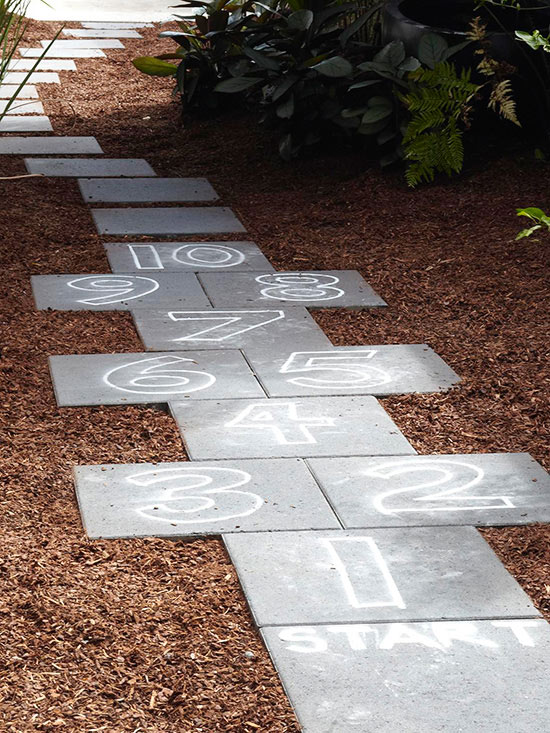 continue reading below
continue reading below
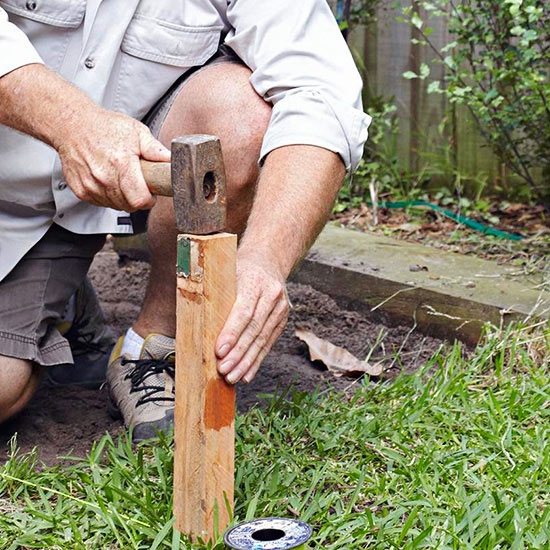
Mark and excavate the area for the hopscotch court and path beyond. Drive one stake next to the path's starting point and another at the path's destination.
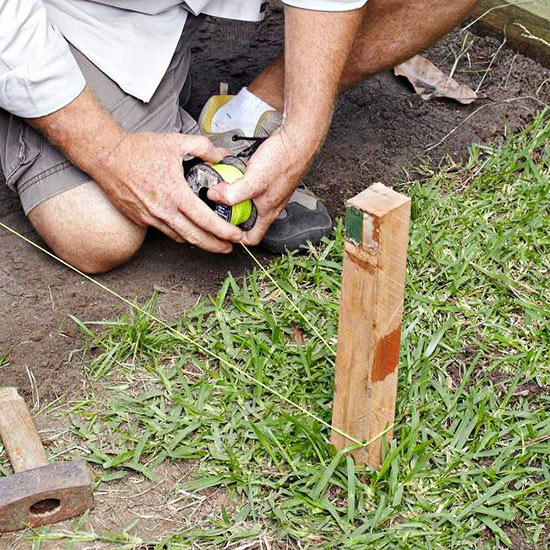
Run string line from peg to peg, pull taut, and use a tape measure to adjust the line so it sits at the desired finished height. Ours aligns with a patio.
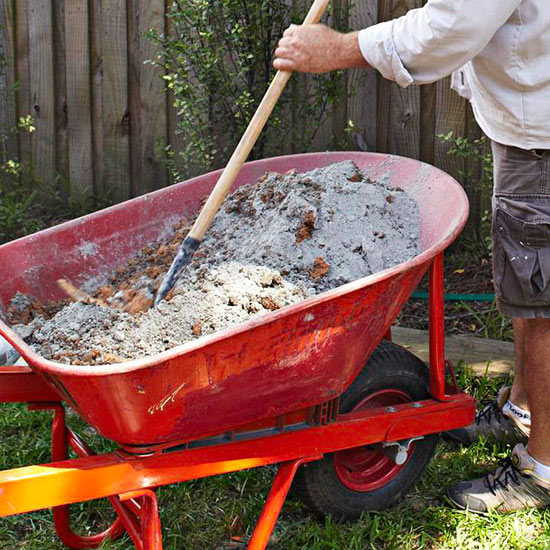
Stone dust provides a stable base so pavers won't shift or sink. In a wheelbarrow, mix the dust with water to the consistency of mud.
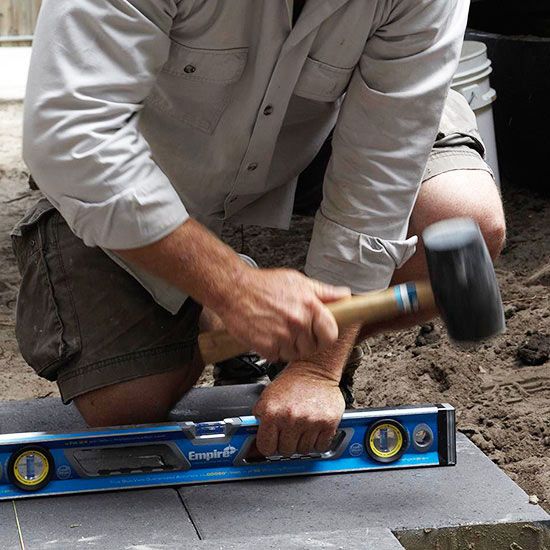
Shovel a scoop of the mix where the first hopscotch paver will rest. Use a wet sponge to dampen one side of the first paver, then lay it wet side down on the mix. Tap into place with a rubber mallet and ensure it's level. Repeat with all hopscotch pavers.
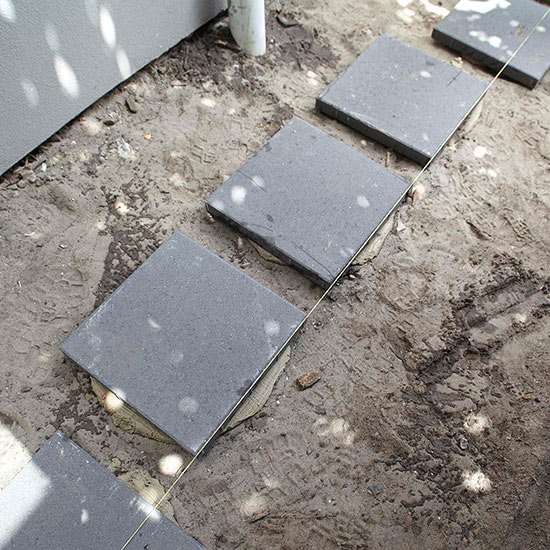
Continue to lay pavers beyond the hopscotch court in the same fashion but leaving about 6 inches between for a natural walking stride. Mulch around pavers, raking until level.
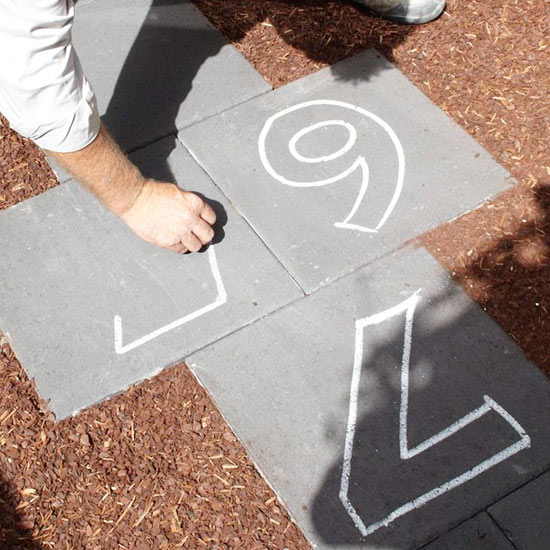
Use chalk to draw numbers on the hopscotch pavers. For a more permanent court, use paint to apply the numbers freehand or with the help of stencils.
• Stand on Start. Toss a stone or other marker into the first square. If you miss the square, you lose your turn.
• Hop through the squares, skipping the one with the marker. The only time you can put two feet down is on the paired pavers and only if the marker isn't on one of them. If you step on a line, miss a square, or lose your balance, your turn ends.
• Hop to the end, jump as you turn around, then hop back to Start, pausing to pick up your marker on the way without hopping on that paver.
• Pass the marker to the next player, who repeats the steps. On your next turn, toss the marker onto square 2, then square 3, and so on.
• The winner is the first person to complete all squares.
Copyright © www.100flowers.win Botanic Garden All Rights Reserved